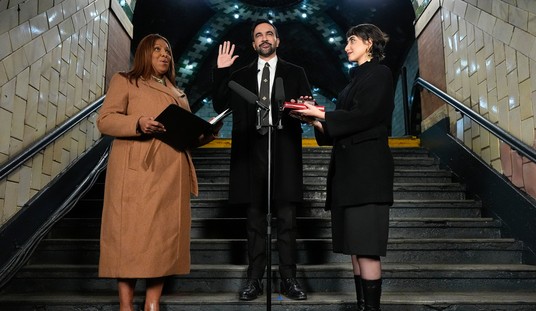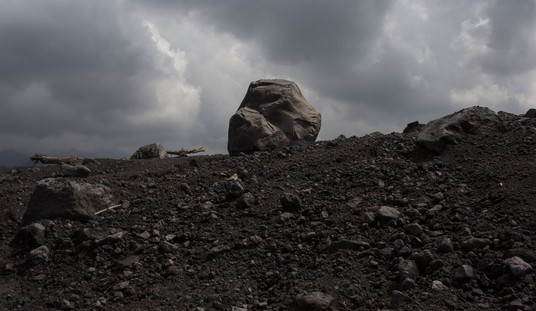It was only a few weeks ago that the company Colossal Biosciences revealed that it had inserted some Woolly Mammoth genes into mice to create mice with Woolly coats.
🐁 First ‘woolly mouse’ paves way for return of the mammoth
— The Telegraph (@Telegraph) March 4, 2025
Rodents genetically engineered to have shaggy fur and the ability to withstand the cold pic.twitter.com/byR59ywKzr
But it turns out Colossal had a much bigger project underway which it has kept under wraps until this week. The company has brought the dire wolf back from extinction after more than 10,000 years. The company made the announcement yesterday on X, explaining that two dire wolf pups had been born last October. De-extinction is now a reality.
We’re Colossal Biosciences, the de-extinction company responsible for bringing back the first animals from extinction. Our dire wolf pups, Romulus and Remus, were born on October 1, 2024. Watch these pups grow up on our YouTube channel. Link in bio.
These two wolves were returned from extinction using genetic edits derived from a complete dire wolf genome, meticulously reconstructed from ancient DNA found in fossils dating back 11,500 and 72,000 years. This achievement is the result of years of pioneering science, tireless innovation, and unwavering dedication.
It marks a major milestone not only for our company, but for science, conservation, and humanity. With the birth of Romulus and Remus, de-extinction is no longer theory—it’s reality. There’s more work ahead, but this moment redefines what’s possible for the planet’s future.
There are a couple of videos worth watching on this. The first is Colossal's own video featuring some of the team that worked on this project. They talk about their goals as well as the exact process used to create these wolves using just two ancient samples that existed in museums. The clip also concludes with some video of the pups who are now about 6 months old.
This really does change life on earth in a very new way. For the first time, we can bring back animals that died out over the past few thousand years. The company has already announced plans to de-extinct three other animials: the dodo, the Tasmanian tiger and the wooly mammoth.
The dodo has only been extinct for a few hundred years. It was a large flightless bird that lived on an island east of Madagascar. The last known sighting was in 1662. It was hunted to extinction partly by sailors but primarily by invasive species brought to the island by sailors.
The human population on Mauritius (an area of 720 sq mi) never exceeded 50 people in the 17th century, but they introduced other animals, including dogs, pigs, cats, rats, and crab-eating macaques, which plundered dodo nests and competed for the limited food resources.
No one knows exactly what a dodo looked like because there are no complete samples in museums.
Can you bring back Dodo? I miss them! pic.twitter.com/CyzQpv6os2
— Alireza (@alirezanasseh) April 7, 2025
The Tasmanian Tiger went extinct even more recently. It was a marsupial that lived in Australia and Tasmania but it died out in Australia several thousand years ago. It continued to exist on the island of Tasmania but they were hunted because they were considered a threat to livestock. The last known Tasmanian tiger died in a zoo in 1936.
Can you please bring back the Tasmanian Tiger next? pic.twitter.com/OIgLLLuGCT
— Aaron Gillett (@aaron_gillett) April 7, 2025
It seems likely that by 2036 they will be back. In fact, we don't actually know how far along Colossal may be in bringing these other animals back. Perhaps there are already dodos or Tasmanian tigers on the way. The company also plans to bring back the Wooly Mammoth and I wonder if other ice age beasts could be brought back, perhaps the wooly rhino or the saber-tooth cat. It would be something to see one of those alive again.
While we're on the topic of ice age predators: there is no such thing as a "saber-tooth tiger".
— Connor Dragonheart (@danyswolf) April 8, 2025
The proper term is "saber-tooth cat" cause they weren't actually that closely related to tigers or other modern big cats, and their common name is "smilodon" ("Knife-Tooth") pic.twitter.com/f7Ap0UlnZR
Finally, even better than the video above is this discussion from the Joe Rogan show in which Joe talks to Colossal CEO Ben Lamm about bringing the dire wolves back. He tells some stories which are not part of the marketing material. This is a short 15 minute clip.
If you want the full interview, it's here. I've only watched about half of the full interview but there's an interesting side-story here about how Colossal represents the same kind of tech-led innovation in bioscience that Space X represents in space exploration. Joe and Ben talk about how the critics are basically whiny academics who exist in a narrow world where nothing ever really gets done beyond writing papers. The advantage Lamm has is that he's not an academic and can focus on creating things rather than purely academic goals.








Join the conversation as a VIP Member